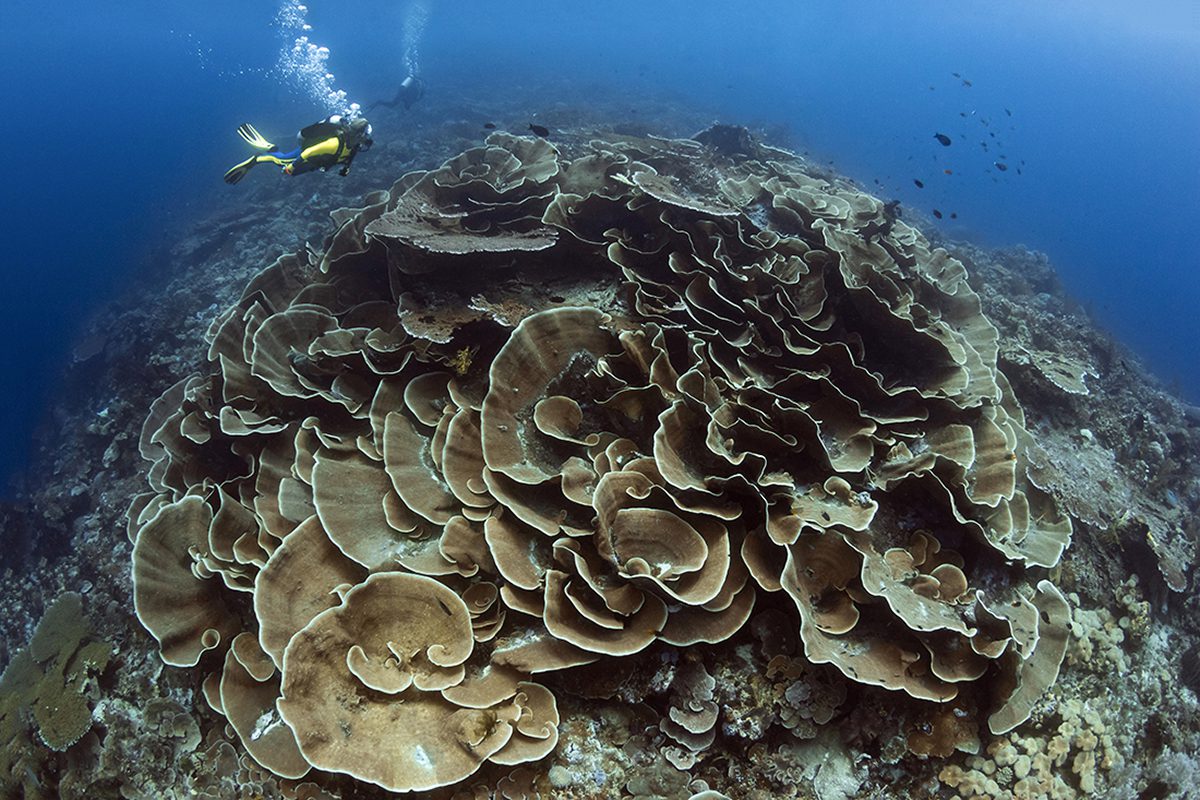For the underwater photographer, Roma's magnificent collection of coral and unique fish life, can present a tough choice in which way to go – macro or wide-angle.
Roma is one of the most popular and celebrated dive sites found within the private marine preserve maintained by the Wakatobi Dive Resort. Numerous publications, blogs and guest reviews have labeled it as one of the world's premier dive sites. Located just offshore of the northwestern corner of Tomia Island, this elongated sea mount rises from deep water to within two meters of the surface at low tide. The site takes its name from the fringing ring of potato coral that encircles the crest of the formation in a pattern reminiscent of the Colosseum in Rome.
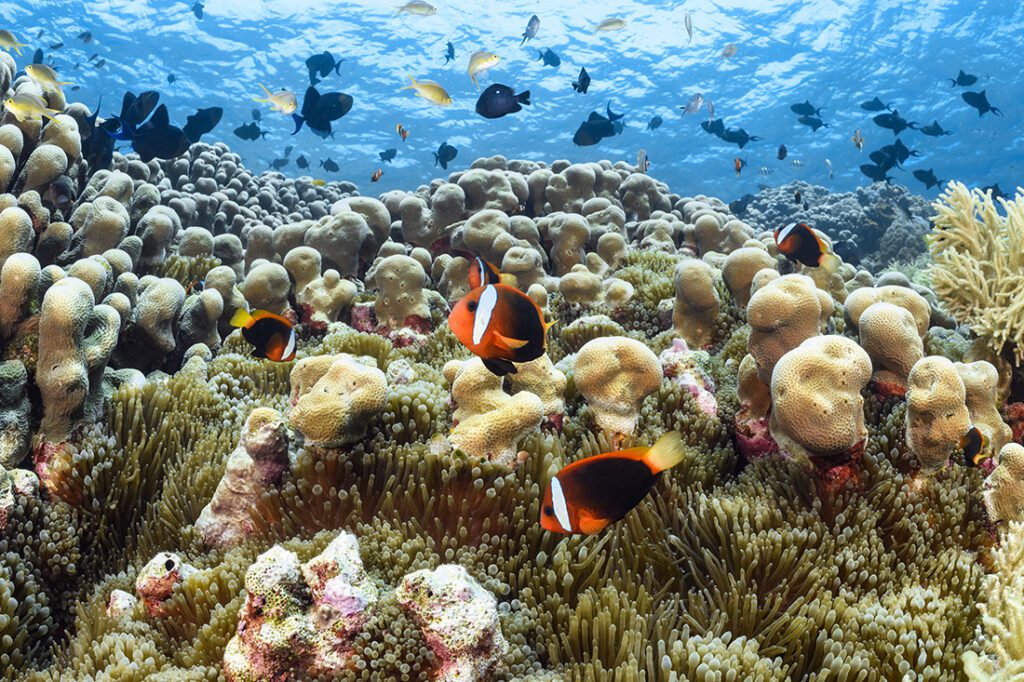
The pinnacle's shallow peak is often enveloped in swirling clouds of fusiliers, pyramid butterfly fish, sergeant majors, snappers and red toothed triggerfish, delighting snorkelers who are welcome to accompany divers on visits to the site. With clear water and ample sunlight, snorkelers can hunt for marine life among the numerous species of coral that thrive at Roma. This upper level is home to numerous colonies of anemones and their resident clownfish, and the site is known for its population of banded sea kraits, which can often be spotted slinking through creases and crevices in the seabed.
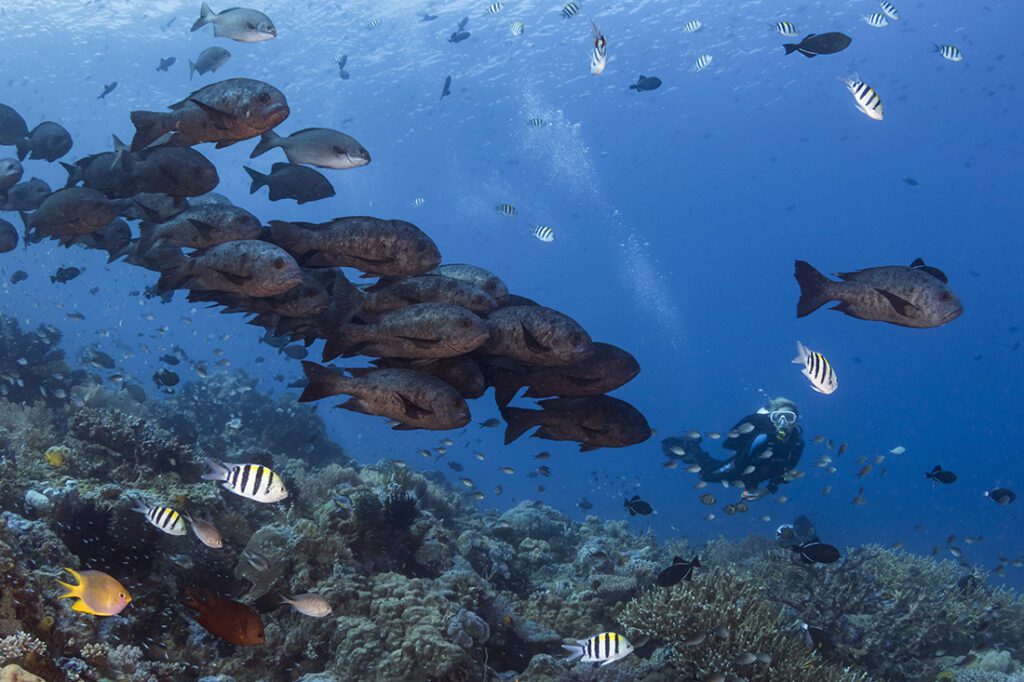
As divers descend from the peak, they may be immersed in a large school of blackfin and bigeye barracuda, or swim into a swarming mass of snapper and jack crevalle.
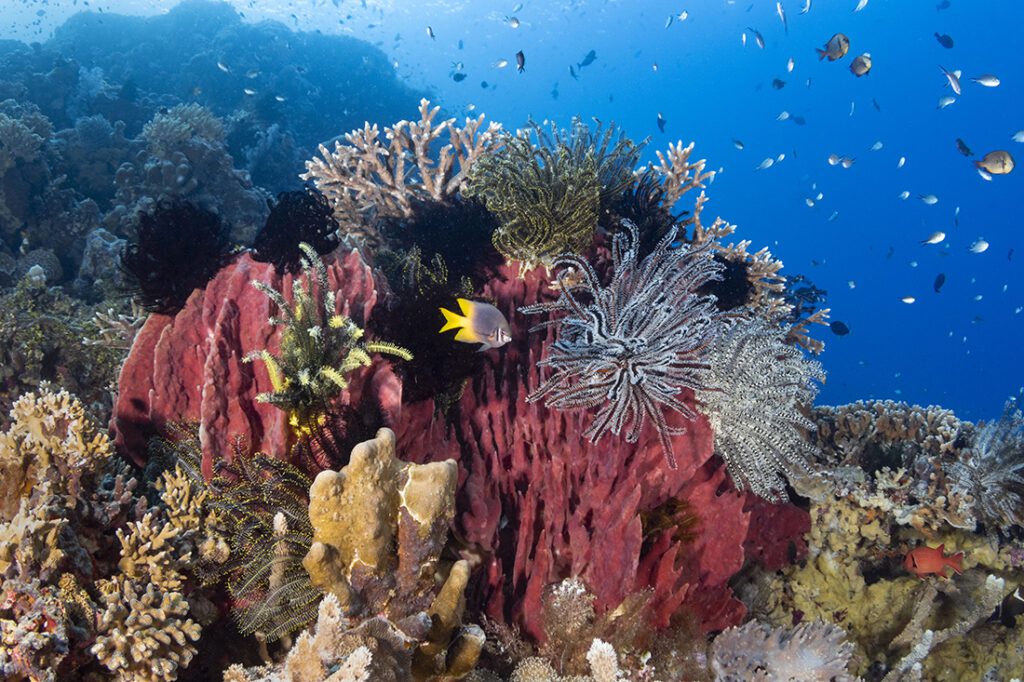
At the 20-meter mark, the site’s prolific coral colonies share space with a grove of large barrel sponges. A glimpse into the inner recesses of these outsized filter feeders may reveal a host of tiny crustaceans
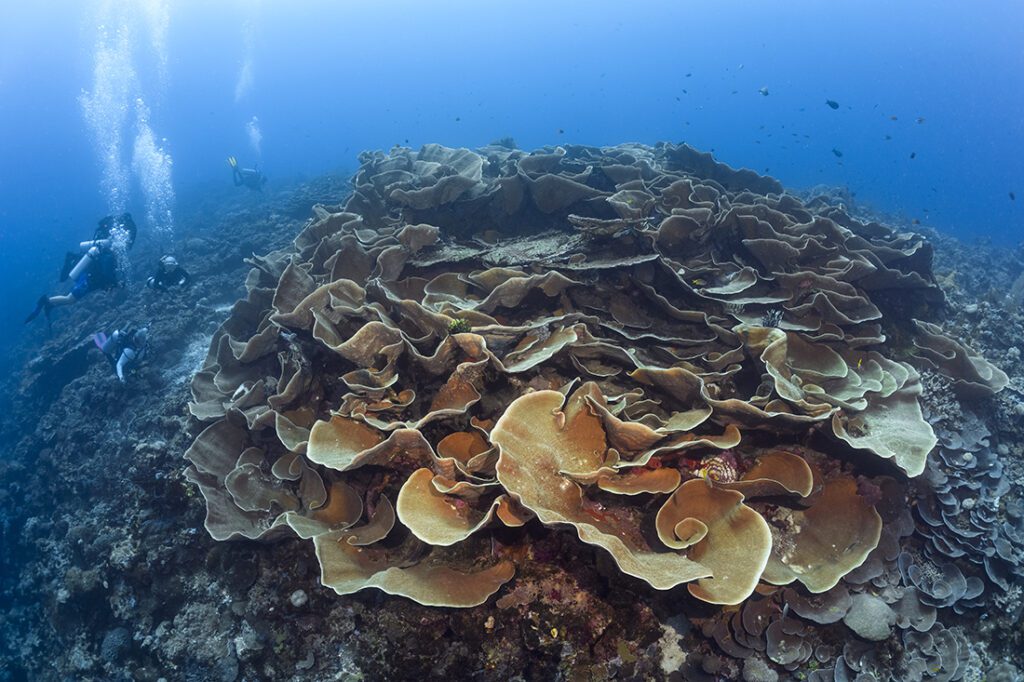
No visit to Roma is complete without a stop to view the signature formation known as The Rose. This circular colony of turbinaria coral measures some 6 meters (20 ft) across. When seen from above, the sculpted leaf-like folds of the formation combine to create the impression of a giant rose flower. Based on the size of this coral colony, it is estimated to be at least 300 years old.
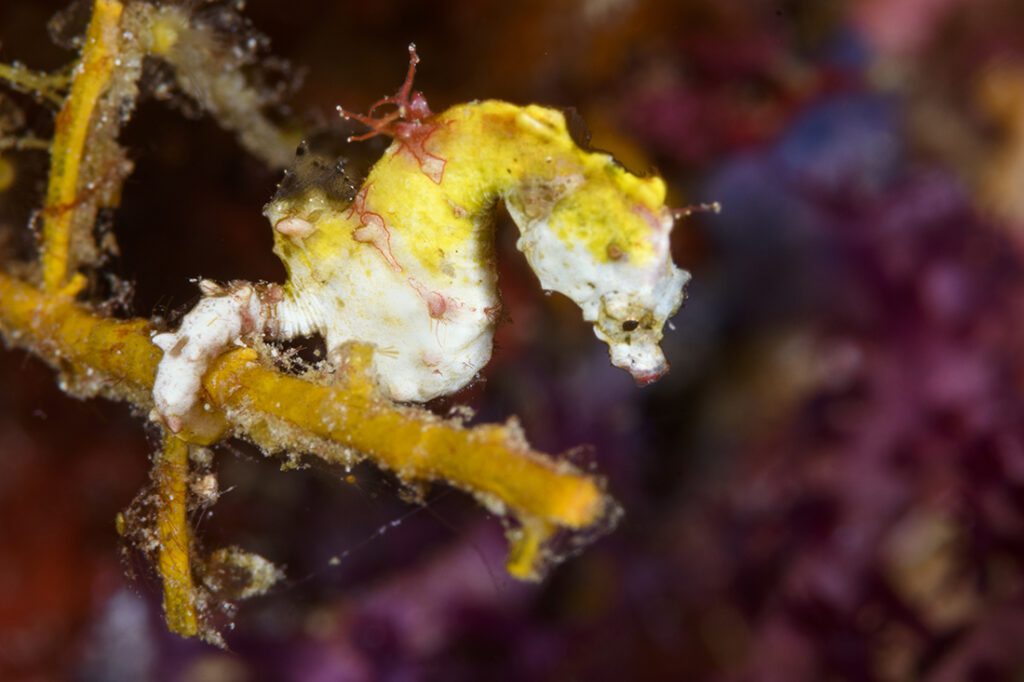
After viewing The Rose, divers typically begin a slow ascent that allows for multi-level profiles of more than an hour. As they ascend the ridge-like face of the sea mount, they can choose between two distinctly different landscapes. To the left, the pinnacle becomes an almost vertical wall that is covered in a dense mixture of hard corals and sponges. Crinoids perch on the outer edges of branching corals, extending frilly, multi-hued tentacles to catch passing morsels brought by the current. Closer looks may reveal crocodile fish staked out in ambush on the edge of an outcropping.
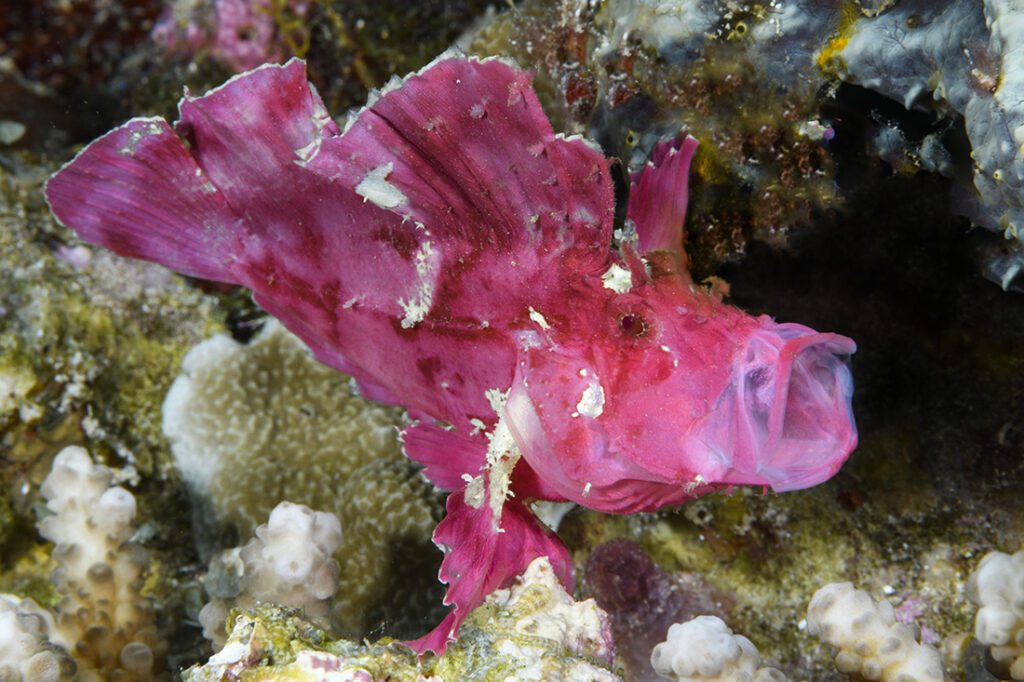
The opposite side of the mount offers a gentler slope covered in pavona coral and clumps of colorful sponges, all interspersed between patches of white sand. The lettuce-like arms of the corals provide shelter for a variety of small reef fish. Cuttlefish and octopus are found on this site with predictable regularity. A closer look reveals multi-hued nudibranchs engaged in slow, slithering marches, mantis shrimp on the hunt and yellow-banded jawfish excavating burrows in the sand patches.
Click here for more information on Wakatobi Dive Resort
To go directly to the Inquire page for booking at Wakatobi Click Here
